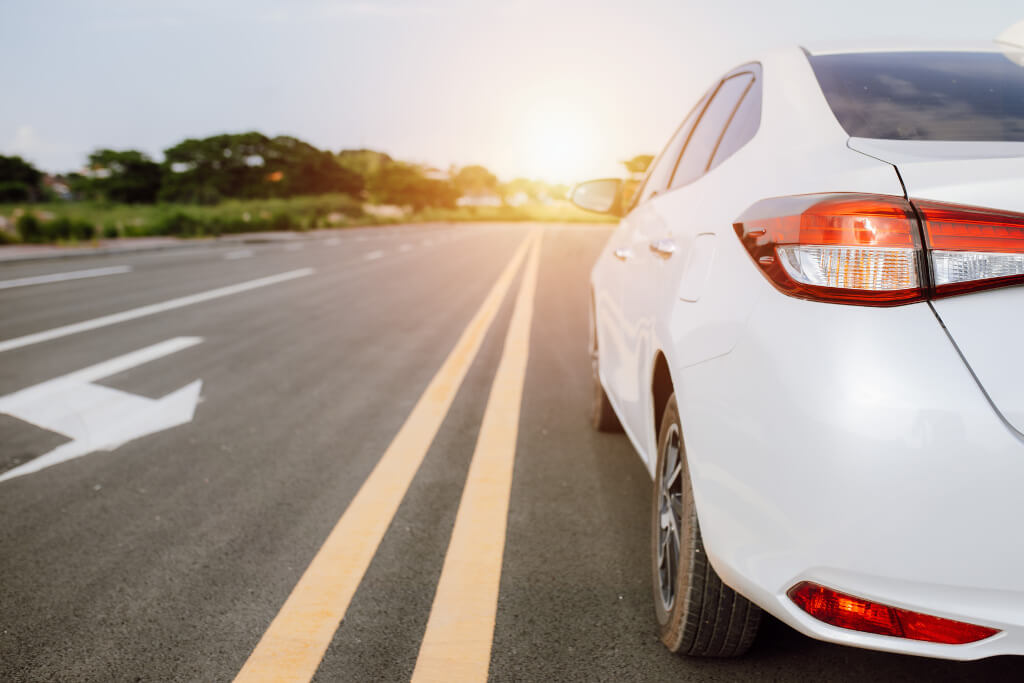To truly grasp the origins of this dichotomy, we must traverse back in time to the mighty Roman Empire. Unsurprisingly, the Romans were pioneers in road construction, creating a vast network of well-traveled routes throughout Europe. With such extensive infrastructure, they needed to establish rules to ensure orderly travel.
So, which side did the Romans choose to drive on? Archaeological evidence from 1998 sheds light on this intriguing question. In Swindon, England, researchers stumbled upon a Roman quarry road, marked with grooves that were significantly deeper on the left side. These grooves resulted from the added weight of stone being transported. It appears that, in the Roman Empire, driving on the left side of the road was the norm.
The precise reasons behind this choice remain shrouded in mystery. However, we can draw parallels to one of the main reasons this practice endured through the Middle Ages.
Medieval Matters
During the Middle Ages, the roads were often perilous for travelers. Meeting strangers on the road was an endeavor best approached with caution. Historians propose that the “keep-left” rule gained popularity during this era because of practical considerations, particularly for those on horseback.
Imagine you’re a right-handed rider, and you encounter some unsavory characters on the road. To defend yourself, you’d want quick access to your weapon, typically positioned on your left side. This setup allowed you to draw your weapon with your dominant hand while maintaining control of the reins with your left hand. Moreover, when meeting a friend on the road, extending your right hand for a friendly greeting was far more convenient without the need to reach across your body while on horseback.
In those times, individuals on horseback held sway on the road, and the rest of the travelers followed suit, adhering to the “keep-left” rule.
The prevalence of this rule became so established that in the year 1300 AD, Pope Boniface VIII decreed that all pilgrims en route to Rome should abide by the “keep-left” rule during their journey. This decree held sway across most of the Western World until the late 1700s.
American Turned to the Right
The 18th century brought significant changes to road etiquette, particularly in the United States. Enter the teamsters, those hardy individuals who drove large wagons, drawn by teams of horses. These wagons, which dominated the roads, played a pivotal role in shaping the future of road travel.
Crucially, many of these wagons lacked a driver’s seat. Instead, the driver would typically perch atop the rear leftmost horse, especially if they were right-handed. This configuration allowed them to expertly manage a team of horses, wielding a whip in their right hand.
This setup necessitated that oncoming traffic keep to the left side of the road. When perched on the rear leftmost horse, it was easier to navigate safely on a “keep-right” road. Moreover, this arrangement offered better visibility for overtaking other wagons or scanning the road ahead, a considerable advantage when positioned on the left side of the wagon.
Gradually, this system spread, and by the late 18th century, the United States began passing laws officially adopting the “keep-right” rule. The movement began in 1792 in Pennsylvania, and it rapidly gained traction, becoming the norm throughout the United States and Canada.
Napoleon and the Continental Shift
Now, you may be wondering: how did this shift from “keep-left” to “keep-right” spread throughout Europe? The credit for this monumental transformation goes to none other than Napoleon Bonaparte.
The reasons for Napoleon’s decision to embrace the “keep-right” system remain a subject of debate and intrigue. Some suggest that the French Revolutionists, eager to distance themselves from papal decrees, sought a departure from the traditional “keep-left” rule. Others speculate that it was a conscious choice to differentiate from the English, who adhered to the opposite system. A third theory posits that Napoleon himself may have instigated this change, although the motivation behind such a decision remains enigmatic.
Regardless of the driving force behind it, France shifted to the “keep-right” system, and under Napoleon’s rule, this new norm spread like wildfire through the territories he conquered. Even after Napoleon’s eventual defeat, most of these regions chose to retain the “keep-right” system. Germany, in particular, played a pivotal role in further propagating this system across Europe.
England Went Against The Grain
Intriguingly, England remained an exception to this sweeping change. The adoption of massive wagons, as seen in the United States, proved impractical on the narrow streets of London and other English cities. Furthermore, England was never subjected to the rule of Napoleon or later, German influence. As a result, they clung steadfastly to their centuries-old “keep-left” tradition.
By 1756, this preference for the left side of the road was officially codified into British law. As the British Empire expanded its reach, this rule extended its influence across the globe. However, in most former British colonies, the “keep-left” tradition eventually gave way to the growing popularity of the “keep-right” system, often influenced by Germany.
One notable exception, in terms of population, is India, where the “keep-left” rule still prevails.
How These Rules Have Evolved
Historical events played a pivotal role in shaping the driving conventions of various countries. The Roman Empire, with its influential road networks, established the groundwork for “keep-left” traditions in Europe. The Middle Ages reinforced this practice, as horseback travelers found it more convenient for self-defense and social interactions.
The advent of large wagons in the United States, driven by right-handed teamsters, led to the adoption of the “keep-right” rule. This practical necessity set the stage for a significant shift in road etiquette.
Napoleon’s rule introduced the “keep-right” system to France, and its subsequent spread across Europe can be attributed to both political and military influences. The French Revolutionists’ desire to distance themselves from the papal decree, coupled with the need to differentiate from the English and Napoleon’s own motivations, all played a part in this transformation. In contrast, England remained a stronghold of the “keep-left” tradition due to its unique urban landscape and isolation from Napoleon and German influence.
The Impact of Industrialization
The industrial revolution in the 19th century ushered in an era of rapid change, including advancements in transportation. The development of automobiles played a crucial role in shaping road etiquette. As car production surged, manufacturers began producing vehicles with steering wheels positioned on the left side. This design favored the “keep-right” system, as drivers had a clearer line of sight when passing other vehicles.
Legalization and Standardization
As countries embraced the automobile, they recognized the need for standardized rules of the road. Governments established traffic laws to ensure safety and order. Many countries officially adopted the “keep-right” system, while others, like England, maintained their traditional “keep-left” practice.
The Influence of Neighboring Countries
The driving conventions of neighboring countries often exerted pressure on one another. Bordering nations sought consistency to facilitate cross-border travel and trade. As a result, some countries switched their driving rules to align with those of their neighbors.
Modern Factors
In the present day, road safety and efficiency are paramount concerns. Traffic management systems, road design, and vehicle manufacturing have all been tailored to accommodate the prevailing driving rules of each country.
Today, the world remains a patchwork of driving conventions, with some 65% of the world’s population driving on the right and the remaining 35% adhering to the left side of the road. Understanding the historical roots of these conventions provides valuable insight into the diverse cultures and traditions that have shaped road etiquette across the globe.




